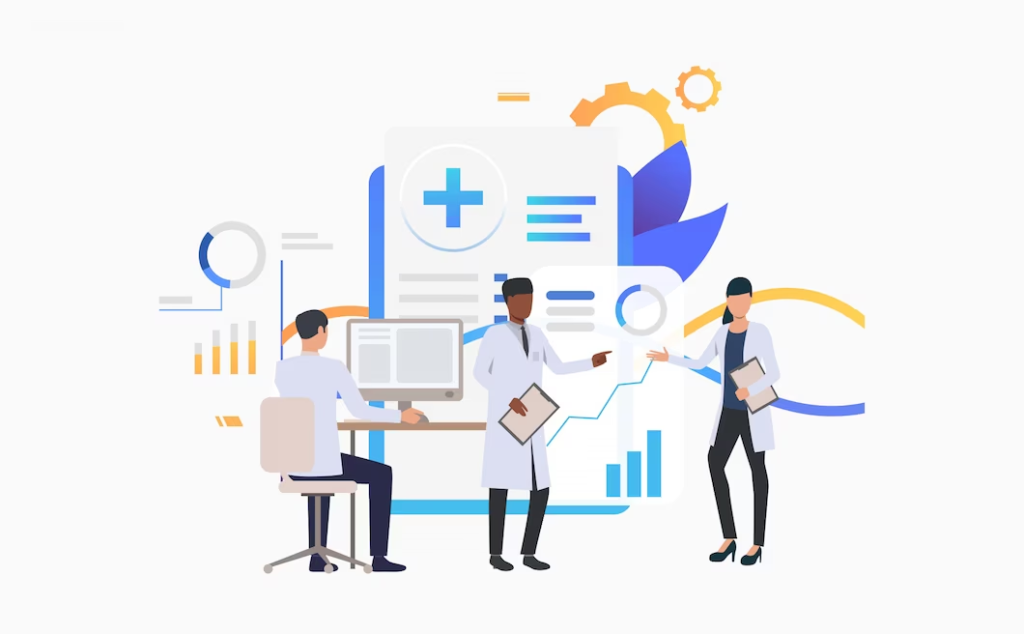FHIR: Revolutionizing Healthcare Data Exchange and Interoperability with GenAI and LLM
FHIR: Revolutionizing Healthcare Data Exchange and Interoperability with GenAI and LLM
Introduction:
- In recent years, the healthcare industry has witnessed a significant transformation in how patient data is exchanged and shared among healthcare providers, payers, and patients themselves. One of the key driving forces behind this revolution is the adoption of the Fast Healthcare Interoperability Resources (FHIR) standard. FHIR has emerged as a game-changer, enabling seamless data interoperability and improving patient care.
- In the dynamic landscape of healthcare, efficient data exchange and interoperability stand as crucial pillars. This blog explores how the powerful combination of Fast Healthcare Interoperability Resources (FHIR) and Large Language Models (LLMs) like GenAI is reshaping healthcare data management.

Understanding FHIR: The Game-Changer for Healthcare Data:
Fast Healthcare Interoperability Resources, or FHIR, is an HL7 International standard designed to streamline the exchange of electronic healthcare information. FHIR’s flexibility, simplicity, and alignment with modern web standards have marked a significant departure from traditional healthcare data standards. This standardization fosters interoperability among disparate healthcare systems, allowing them to communicate seamlessly, share patient information securely, and provide real-time access to vital medical records.
The Role of LLMs and GenAI in Data Generation:
Large Language Models (LLMs), exemplified by GenAI, have emerged as powerful tools in healthcare data generation. Trained on extensive text data, LLMs possess the capability to understand and generate human-like text. Their potential in crafting synthetic healthcare data records for testing and development in healthcare IT environments is noteworthy. GenAI and similar LLMs offer versatility and efficiency, making them indispensable in healthcare data generation tasks.
The Synergy of FHIR, LLMs, and GenAI:
Imagine a scenario where healthcare IT developers require a substantial dataset of patient records to rigorously test their FHIR-based applications. Rather than relying solely on authentic patient data, which may be limited or sensitive, they can harness the data generation prowess of LLMs like GenAI. These models can create synthetic patient records that adhere to FHIR standards, tailored to specific scenarios, medical conditions, demographics, and treatment histories.
This synergy among FHIR, LLMs, and GenAI unlocks an array of possibilities for the healthcare industry:
- Robust Testing Environments: Healthcare IT developers can construct comprehensive datasets for testing the interoperability and compliance of their applications with FHIR standards, ensuring seamless performance in real-world scenarios.
- Efficient Training and Education: LLM-generated simulations can enhance the training and decision-making skills of healthcare professionals. Realistic scenarios in a risk-free environment contribute to better-prepared healthcare teams.
- Data Privacy and Security: By leveraging synthetic data generated by LLMs, organizations can address privacy concerns associated with real patient data. Synthetic data can be safely shared and utilized for research and development without compromising patient confidentiality.
Interoperability:
Definition: Interoperability in healthcare refers to the ability of different healthcare systems and software to exchange and use data seamlessly. FHIR plays a crucial role in promoting interoperability in the following ways:
• Common Framework: FHIR provides a standardized framework for representing and exchanging healthcare data. When different systems adopt the same FHIR standards, they can understand and process each other’s data more easily.
• Data Consistency: FHIR resources have well-defined structures and data types, ensuring consistency in data representation. This consistency reduces the likelihood of errors and misinterpretations when data is exchanged.
• Reducing Data Silos: Traditional healthcare systems often store data in isolated silos, making it challenging to share information. FHIR’s interoperability features break down these data silos by enabling data to flow seamlessly between different systems. This is especially important for patient care coordination and continuity.

• Patient-Centric Care: FHIR also supports patient access to their own health data, empowering individuals to be more engaged in their healthcare. Patients can use FHIR-enabled applications to access and share their health records with various healthcare providers.
In summary, FHIR’s resource-oriented model, RESTful API design, and focus on interoperability are key features that make it a powerful standard for modernizing healthcare data exchange. It simplifies data management, promotes standardized access, and facilitates communication between diverse healthcare systems, ultimately leading to improved patient care and data interoperability in the healthcare industry.

Example FHIR Resource – Patient: Json

In this example, we have a FHIR Patient resource representing a patient named John Smith.
How FHIR Benefits Healthcare:
• Improved Data Exchange: FHIR facilitates the exchange of patient data between different healthcare systems, making it easier for providers to access critical information.
• Patient Engagement: Patients can access their health records through FHIR-enabled apps, empowering them to take control of their health.
• Research and Analytics: Researchers can leverage FHIR data for population health management and clinical research.

Conclusion:
- The healthcare industry’s journey towards seamless data exchange and interoperability is propelled by innovative technologies like FHIR. When combined with the data generation capabilities of LLMs such as GenAI, these innovations offer a transformative path. They empower healthcare organizations to build robust systems, enhance professional training, ensure data privacy, and revolutionize healthcare data management.
- As we continue exploring these technologies, one thing becomes evident: the future of healthcare data exchange and interoperability shines brightly, shaped by the convergence of FHIR, LLMs, and pioneering AI solutions like GenAI. This dynamic synergy is set to redefine how healthcare data is handled, fostering a new era of efficiency and excellence in the industry.
Contact Us
Let us innovate together. If you are interested in exploring this further contact us at https://cloudastra.ai/contact-us
